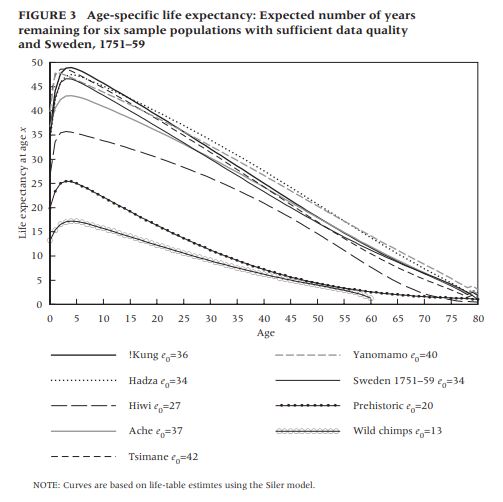Paleolithic Lifespan
The lifespan of paleolithic man is a subject of considerable controversy on the internet and in pop-culture, largely politicized by dietary dogmas such as the paleolithic diet.
Physical evidence
Based on physical evidence, the life-expectancy of paleolithic man was only slightly higher than the typical life-expectancy of wild chimpanzees, and probably roughly equal to chimpanzees in more ideal wild environmental conditions[1], roughly 33 years.
Ultimately, environment, including regular food supply and low predation, is one of the leading factors in life expectancy:
"Our findings show how ecological factors, including variation in food supplies and predation levels, drive variation in life expectancy among wild chimpanzee populations [...] They also inform the study of the evolution of human life history, helping us to imagine the conditions that could have changed mortality rates among our early hominin populations." -Brian Wood, assistant professor of anthropology at Yale University[2]
Paleo-diet propaganda alleges that people misrepresent paelolithic lifespan by quoting averages including infant mortality (which was high by modern standards), but that adults routinely lived into very old age thanks to the miraculous grain-free diet, and that the advent of farming shortened average adult life expectancy due to dietary reasons.
While inclusion of infant mortality lowers the numbers (life expectancy of 33 at birth doesn't mean that you won't live past 33, but that the average person won't), life expectancy at 15 was still low and below 50 years total, both by modern standards (77-81 total) and even by the standards of modern hunter-gatherers.
